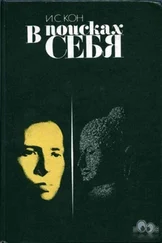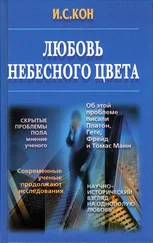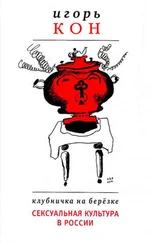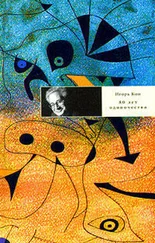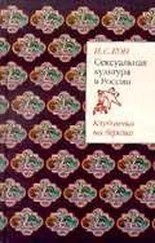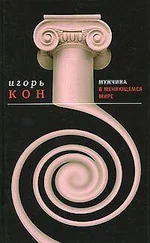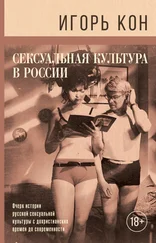Fraser N. The Importance of Being Eton: Inside the World\'s Most Powerful School. London: Short Books, 2006.
Fukuzawa R. E., Le Tendre G. Intense Years: How Japanese Adolescents Balance School, Family and Friends. New York, London: Routledge Falme, 2001.
Fuller J. M. The science and statistics behind spanking suggest that laws allowing corporal punishment are in the best interests of the child //Akron Law Review. 2009. Vol. 42. No. 243.
Gathorne-Hardy J. The Public School Phenomenon, 597—1977. L.: Hodder and Stoughton, 1977.
Gershoff E. T. Corporal punishment by parents and associated child behaviors and experiences: A meta-analytic and theoretical review // Psychological Bulletin. 2002. Vol. 128. P. 539–579.
Gershoff E. T. More harm than good: A summary of scientific research on the intended and unintended effects of corporal punishment on children // Law and Contemporary Problems. 2010. Vol. 73. P. 33–58.
Gershoff E. T., Grogart-Kaylor A., Lansford J. E., Chang L. et al. Parent discipline practices in an international sample: Associations with child behaviors and moderation by perceived normativeness // Child Development. 2010. Vol. 81. Issue 2. P. 487–502.
Gibson I. The English vice. Beating, sex and shame in Victorian England and after. Duckworth, 1978.
Global Initiative to End All Corporal Punishment of Children // http://www.endcorporalpunishment.org.
Goldfrank E. Socialization, Personality, and the Structure of Pueblo Society//American Anthropologist. 1945. Vol. 47. P. 516–539.
Goldman J. D. G., Goldman R. J. Children’s Perceptions of Parents and their Roles: A Cross National Study in Australia, England, North America and Sweden // Sex Roles. 1983. Vol. 9. P. 791–812.
Goodman R. Children of the Japanese State: The Changing Role of Child Protection. Oxford University Press, 2000.
Goodman R. Family and Social Policy in Japan: Anthropological Approaches, Cambridge University Press: Cambridge, 2002.
Grogan-Kaylor A. Corporal punishment and the growth trajectory of children’s antisocial behavior // Child Maltreat. 2005. Vol. 10. № 3. P. 283–292.
Hendry J. Understanding Japanese Society. 3 ed. London: Routledge, 2003.
Holden G. W. Perspectives on the effects of corporal punishment: Comment on Hollowell C. Enforcing performance: Disciplining girls in British co-educational boarding school stories, 1928—58 // International Research in Children\'s Literature. 2008. Vol. 1. P. 125–138.
Hollowell С. Enforcing performance: Disciplining girls in British coeducational boarding school stories, 1928—58 // International Research in Children’s Literature. 2008. Vol. 1. P. 125–138.
How They Were Taught / P. H. J. H. Gosden (ed.). Oxford: Basil Blackwell, 1969.
Hunt D. Parents and Children in History // Psychology of Family Life in Early Modern France. N.Y.: Basic Books, 1970.
International comparative research on «home education»: survey on children and the family life. Tokyo, Japan Association for Women\'s Education, 1995.
International Save the Children Alliance on corporal punishment. April 2003.
Ishii-Kuntz М. K., Kato K., Tsuchiya M. Japanese fathers of preschoolers and their involvement in child care // Journal of Marriage and Family. 2004. Vol. 66. P. 779–791.
Japanese fathers become \'Papa Danshi\' // CNNGo.com http://www.cnngo.com/tokyo/none/papa-danshi-japanese-fathers-who-being-fathers-289399#ixzz01nwXZBcR. James A., Jencks C., Prout A. Theorizing Childhood. L.: Polity press, 1999.
Kacker L., Varadan S., Kumar P. Study on Child Abuse: India 2007. New Dehli: Ministry of Women and Child Development, 2007.
Kelly C. Children’s World. Growing Up in Russia, 1890–1991. New Haven-L.: Yale UP, 2007.
Kessler R.C., McLaughlin K. A. et al. Childhood adversities and adult psychopathology in the WHO World Mental Health Surveys // The British Journal of Psychiatry. 2010. Vol. 197. P. 378–385.
King N., Butt Т., Green L. Spanking and the corporal punishment of children: the sexual story // International Journal of Children\'s Rights. 2003. Vol. 11. № 2. P. 199–217.
Kobayashi NTanimura М., Shimauchi Y. Corporal punishment in the schools and homes of Japan, 9th Asian Congress of Pediatrics, Hong Kong, 22–23 March 1997 (http://www.childresearch.net/RESOURCE/PRESEN/1997/KORNER/CORPO.HTM).
Kobayashi-Winata H., Power T. G. Child rearing and compliance: Japanese and American families in Houston // Journal of Cross-Cultural Psychology. 1989. Vol. 20. № 4. P. 333–356.
Krueger R. B. The DSM diagnostic criteria for sexual sadism //Archives of Sexual Behavior. 2010. Vol. 39. P. 325–345, 346–356.
Lansford J. E. The special problem of cultural differences in effects of corporal punishment // Law and Contemporary Problems. 2010. Vol. 73. P. 89—106.
Lansford J. E, Chang L., Dodge K. A., Malone P. S. et al. Cultural normativeness as a moderator of the link between physical discipline and children\'s adjustment: A comparison of China, India, Italy, Kenya, Philippines, and Thailand // Child Development. 2005. Vol. 76. P. 1234–1246.
Lansford J. E., Criss М. М., Dodge K. A. et al Trajectories of physical discipline: early childhood antecedents and developmental outcomes // Child Dev. 2009. Vol. 80. № 5. P. 1385–1402.
Lansford J. E., Deater-Deckard K., Dodge K. A., Bates J. E., Petit G. S. Ethnic differences in the link between physical discipline and later adolescent externalizing behaviors // Journal of Child Psychology and Psychiatry. 2004. Vol. 45. P. 801–812.
Lansford J. E., Dodge K. A. Cultural norms for adult corporal punishment of children and societal rates of endorsement and use of violence corporal punishment and societal violence // Parenting: Science and Practice. 2008. Vol. 8. № 3. P. 1—24.
Larzelere R. E. Child outcomes of nonabusive and customary physical punishment by parents: An updated literature review // Clinical Child and Family Psychology Review. 2000. Vol. 3. № 4. P. 199–221.
Larzelere R. E., Baumrind D. Are spanking injunctions scientifically supported? // Law and Contemporary Problems. 2010. Vol. 73. P. 57–88.
Larzelere R. E., Cox R. B. Jr., Smith G. L. Do nonphysical punishments reduce antisocial behavior more than spanking? A comparison using the strongest previous causal evidence against spanking // BMC Pediatrics. 2010. 10:10 (http://www.biomedcentral.com/1471-2431/10/10).
Larzelere R. E., Kuhn B. R. Comparing child outcomes of physical punishment and alternative disciplinary tactics: a meta-analysis // Clinical Child and Family Psychology Review. 2005. Vol. 8. № 1. P. 1—37.
Lau J. Т., Kim J. H., TsuiH. Y., Cheung A., LauMYu A. The relationship between physical maltreatment and substance use among adolescents: a survey of 95,788 adolescents in Hong Kong // Journal of Adolescent Health. 2005. Vol. 37. P. 110–119.
Les Frangais et la fessee 2009 // http://www.tns-sofres.com/points-de-vue/024C9158AD2245C4A02E32CD19282A99.aspx.
Levinson D. Family Violence in Cross-cultural perspective. Newbury Park, CA: Sage, 1989.
Loseke D. R. Reply to Murray A. Straus: Readings on “Discipline and Deviance”// Social Problems. 1999. Vol. 38. № 2. P. 162–166.
Lysova A. V. Corporal Punishment and Depressive Symptoms: The Moderating Effect of Positive Parenting in a Multi-National Perspective and Russia. Presented at the World Society of Victimology\'s 13th International Symposium on Victimology, on August 23–28, 2009 on Tokiwa University Campus in Mito, Japan.
Mathurin M. N., Gielen U. P., Lancaster J. Corporal punishment and personality traits in the children of St. Croix, United States Virgin Islands // Cross-Cultural Research. 2006. Vol. 40. № 3. P. 306–324.
Читать дальше
Конец ознакомительного отрывка
Купить книгу


